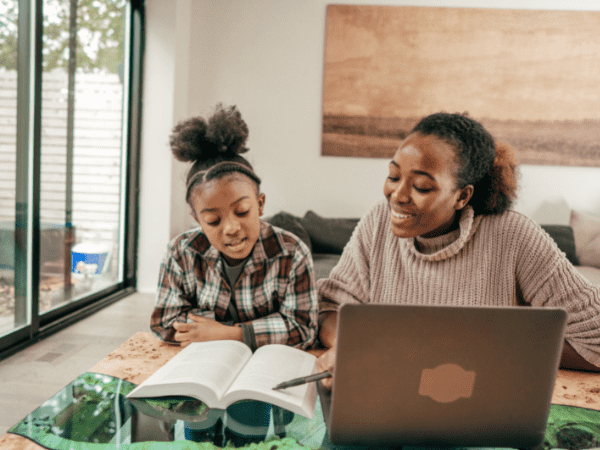TeacherMade has a new name: Classwork Studio
Tutoring is one of the best strategies to employ when students fall behind. But how do you do it for large groups of students who have experienced learning loss due to the pandemic? We will walk you through strategies for structuring tutoring programs that work and effective tutoring strategies.

It’s normal for students to experience lags in learning progress after periods away from school. It happens all the time after a summer break. But COVID school disruptions have lasted much longer than a summer break. Also, the pandemic’s feeling of social isolation has created many mental health issues among students. It is no wonder that there has been a considerable drop in learning that experts are calling learning loss.
The term learning loss can be deceiving. In reality, it is more of disruption that causes the typical learning path to go off course. Historically, the term has been used with summer learning loss, but now experts use the terms regarding the pandemic.
In recent studies, 84% of school districts implement tutoring in the 2021-2022 school year. This is a 10% increase since the pandemic began. This makes sense. Tutoring addresses many of the needs of students who have experienced learning loss.
Often tutors are not used effectively because either the program lacks structure or the tutor has not been trained. Here are a few characteristics of effective tutoring:
Tutoring can be streamlined using tools like TeacherMade. TeacherMade allows tutors to upload exercises that they already have and convert them into interactive digital activities. TeacherMade is especially helpful for tutoring because it provides instant feedback and data on what is accomplished. You can then personalize tutoring sessions to fit the need of your students.
Questioning is a tutoring technique often used by tutors. It is simply asking questions to your tutor group to see what they know. When they get a question incorrect, then you have a starting point. Questioning is constructive for instantly correcting problem areas. Tutors can digitize through TeacherMade. If you are leading a small group tutoring session, send each student a set of questions to evaluate where they are in the learning process.
Drills are a little different than questioning. Drills are considered questions with a repetitive element meant for practice (i.e., multiplication tables). Tutoring is a great time to practice because tutors can immediately correct errors and provide intervention. TeacherMade can be used to expedite drill work. Then students and tutors can get instant feedback.
A simple strategy of role reversal can add a new variety to your tutoring. Turn the tables and get your student to teach the material. When students have to teach the material, they are more likely to learn concepts more deeply. This is because they will have to understand concepts well enough to explain them in their own words. You can even have them create a test or quiz for you to take. You can convert all tests into digital assignments with TeacherMade.
Turning anything into a game will make tutoring more exciting. Taking simple drill work and practice problems and turning it into a game will help. If you are tutoring with a small group, try putting a time challenge or highest amount correct. This can add something extra to the material, and TeacherMade makes it easy to time and score assignments.
Reading and reading comprehension skills can be a real struggle for students. You can add a text into TeacherMade and add guided questions along the way. Have students highlight answers and evidence in place of answers. This will highlight close reading techniques.
With TeacherMade, you can use the drawing tool. This can help in various subjects from math, science, language arts to social studies. This interactive tool gives you options for drawing on a PDF during your tutoring session.
TeacherMade makes converting your existing paper, PDF, images, and Microsoft Docs files easy. You can digitize assignments to reuse assignments for additional and future tutoring groups. TeacherMade works in the classroom and out!
© 2024 All Rights Reserved.